- The Loveable Beast
- The Romanian Brown Bear's Habitat
- What do brown bears eat?
- When do brown bears in Romania hibernate and mate?
- Are brown bears dangerous?
- Why should we protect brown bears?
- Threats - Habitat Loss
- Threats - Human and Bear Conflict
- Threats - Negative Press and Political Exacerbation
- The Potential Solutions
- 2. Education and Effective Management Strategies
- 3. Nature-Based Tourism
- 4. Rewilding
- How to Contribute to Reforestation and Rewilding of the Carpathian Mountains
- Glossary of terms
Within Europe’s last truly remaining wilderness still lives one of the planet’s most captivating creatures - Romanian Brown Bears (Ursus arctos). A series of attacks in recent years has provoked a movement against this emblematic species to safeguard human settlements in the Carpathian Mountains. Supporters of this movement claim increasing bear populations are the cause, however, scientific research disputes this and leads us to consider human encroachment of the brown bear’s habitat as the root cause of the conflict.
Read on to find out why a healthy population of Romanian Brown Bears is important for the ecosystem (including humans) and what is being done to resolve this problem.
The Loveable Beast
Few animals capture the imagination quite like European brown bears. They can stand on two legs, walk on the soles of their feet, pick things up with their “fingers,” and often eat what we eat. This, coupled with their ability to communicate with one another through scratch marks left on trees, smells and sounds, establishes a similarity to our own way of life.
European brown bears can reach towering sizes of just over 7ft (2.20m) weighing between 100-350kg, although they are smaller than North American ‘big browns’ on the Alaskan coast, who can grow up to 8ft tall and 540kg! Despite being Europe’s largest carnivore, they are incredibly fast and can run at speeds of 30mph (48.2kph) in addition to being great tree climbers. Being the most widely distributed bear in the world, proves this unique species is opportunistic and adapts to its environment.
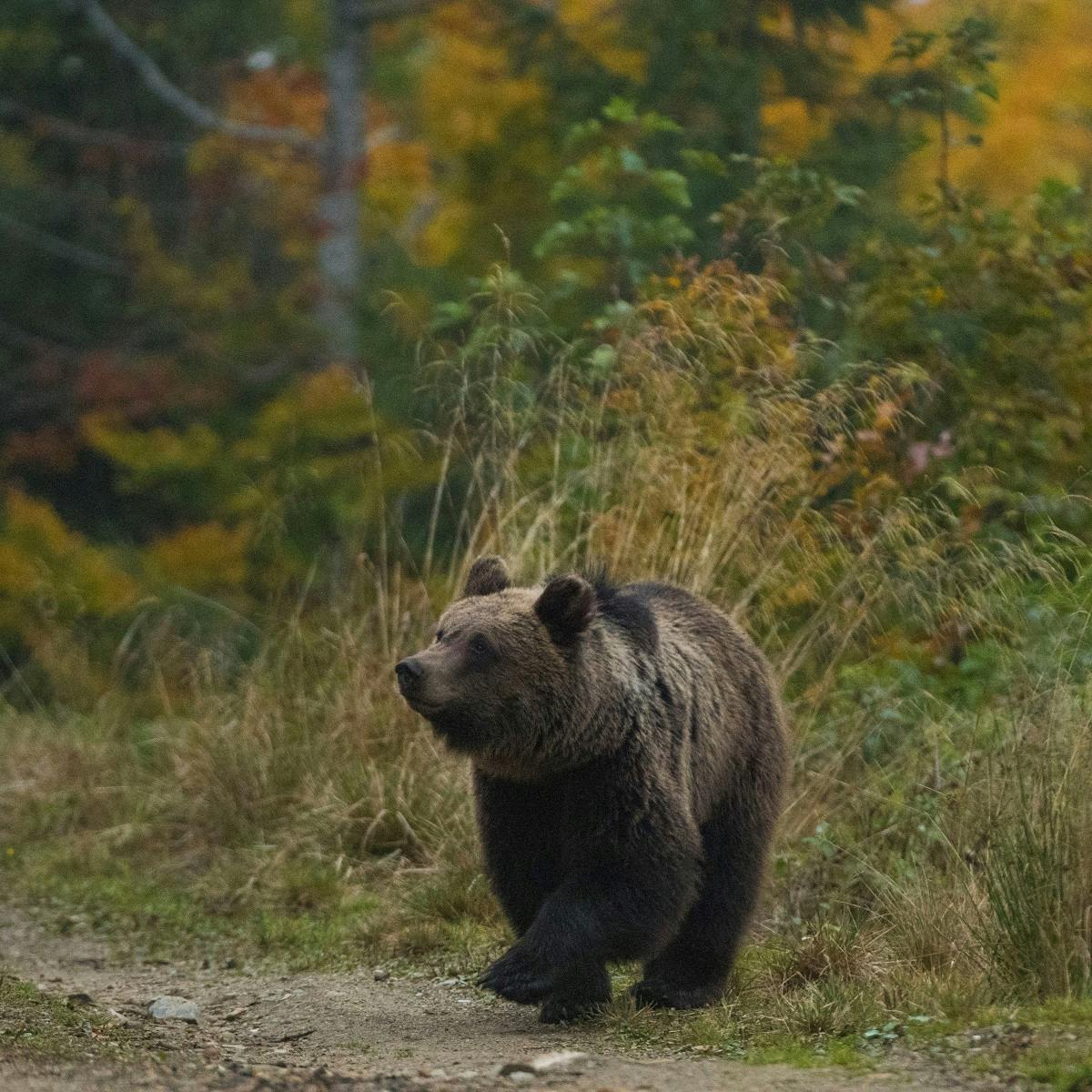
The Romanian Brown Bear's Habitat
Romania is home to 60% of Europe's brown bears. There are believed to be over 200,000 brown bears in the world, of which 6,000 of them roam Romania’s forests in the Carpathian Mountains - the largest population of bears in Europe. However, some research has questioned the validity of this estimation and believe the actual number could be around 4,350. Romania's brown bears are mostly found in mountain woodlands, as they require areas with thick, dense cover in which to shelter by day. These woodlands provide a safe haven for brown bears to set up dens away from human activity. Other landscapes brown bears are attracted to in Romania include wood pastures (such as grazed grasslands) to feed on fruit trees and shrubs, and larvae from anthills. Human impact in the forms of intensified agriculture and land abandonment are threatening this habitat for bears and many other species that depend on it.
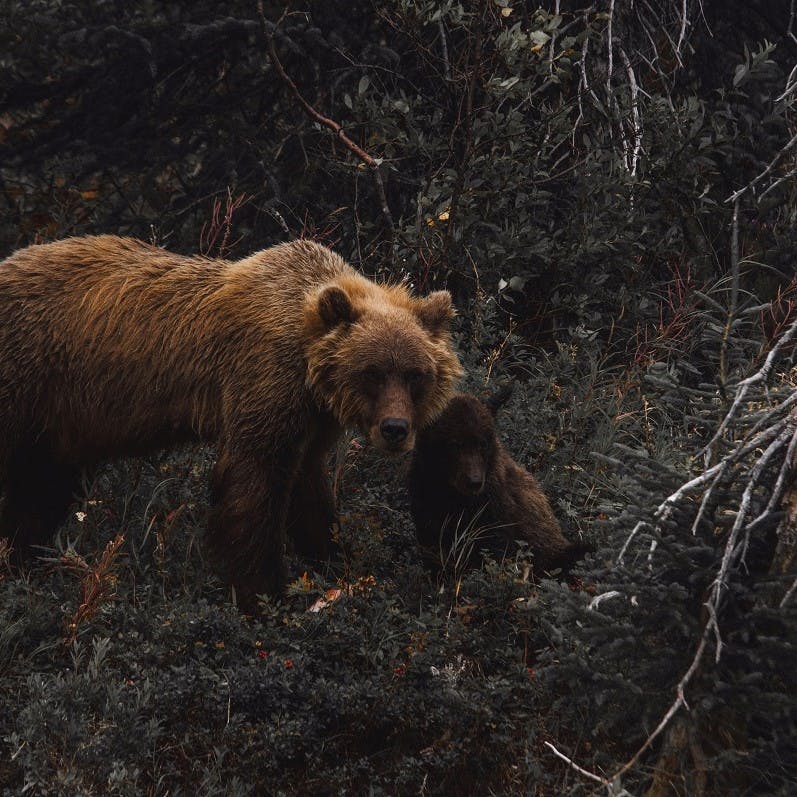
What do brown bears eat?
Their diet varies depending on the season and includes grass, roots, berries, apples and nuts, plums, as well as insects, carrion, and mammals and, of course, honey. Brown bears usually forage in the morning and evening, and rest under dense vegetation during the day.

When do brown bears in Romania hibernate and mate?
Bears hibernate from autumn to late spring in a burrow, either on a sheltered slope under a large stone or among the roots of a large tree. Brown bears mate from May to July, with the birth of cubs usually while the female is still in hibernation from January to March. The cubs stay with her until two or three years old.
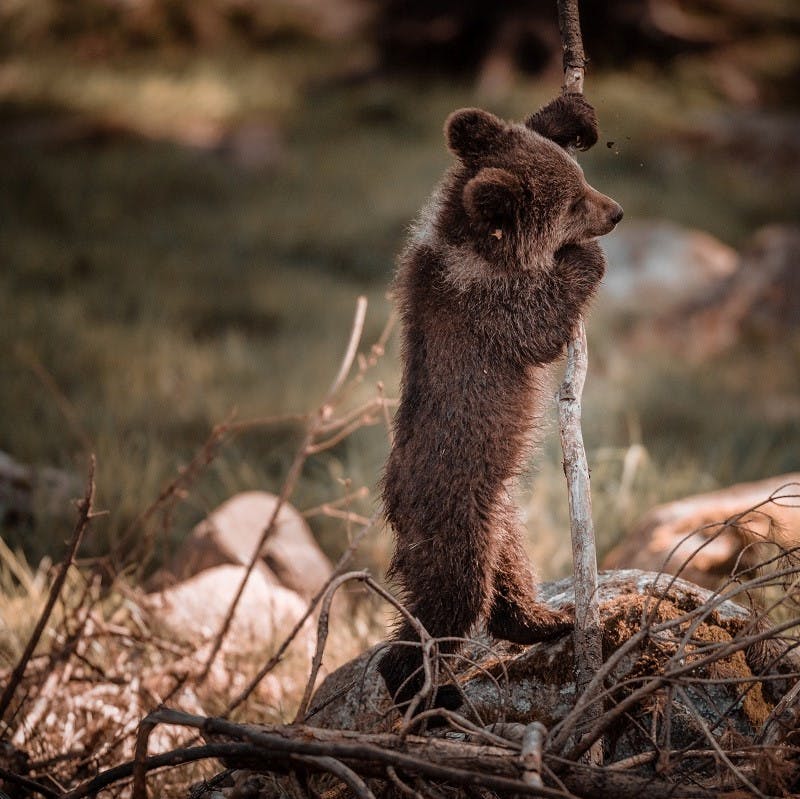
Are brown bears dangerous?
In short, yes bears can be dangerous, but it must be stated they instinctively avoid humans and only attack if they feel threaten. Brown bears do not prey on humans, they are naturally wary of us, so encounters are rare. If you ever visit an area populated by bears it is vitally important you learn and respect their behaviours. For instance, a bear standing tall on its hind legs indicates curiosity of its surroundings and not a threat of attack. Therefore, avoid surprising and distressing bears by making your presence felt calmly, bear in mind (no pun intended), they have poor eyesight so speaking softly and remaining calm is advised.
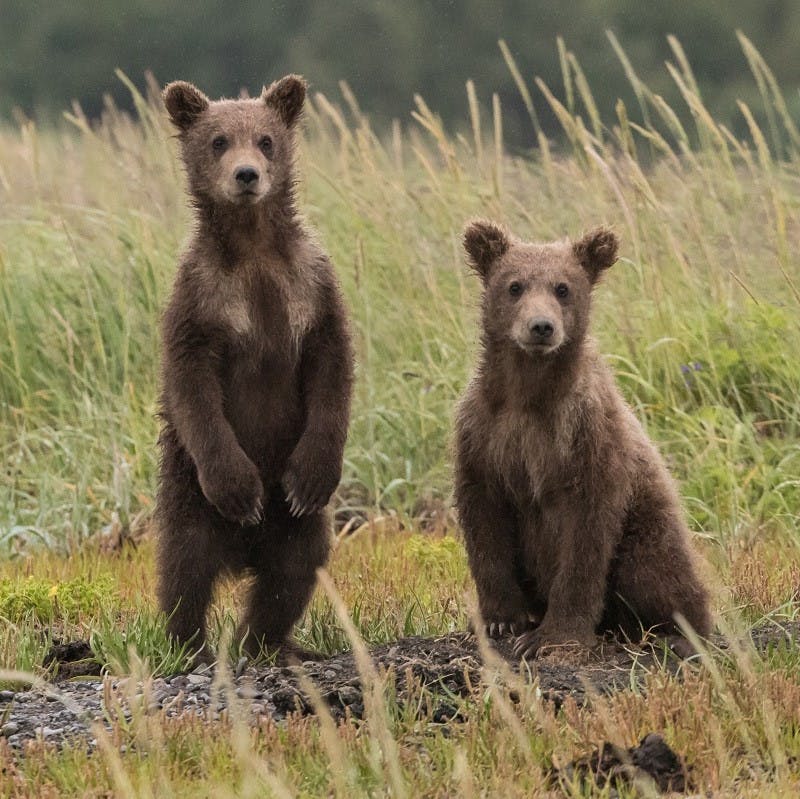

Take action now
Do you want to have a direct impact on climate change? Sir David Attenborough said the best thing we can do is to rewild the planet. So we run reforestation and rewilding programs across the globe to restore wild ecosystems and capture carbon.
Get involvedWhy should we protect brown bears?
A Keystone Species
Healthy bear numbers are a sign of a healthy, productive forest environment, rich in herbs, mushrooms, forest fruits and wild animals. Given their dependence on these large natural areas, brown bears are important management indicators for a number of other wildlife species. Brown bears also play important roles as predators who keep other animal populations in check, culling the weak and cleaning up dead animal carcasses, which would otherwise spread disease in the forest. Additionally, they act as seed dispersers, roaming large territories and thus scattering undigested plant seeds all over.
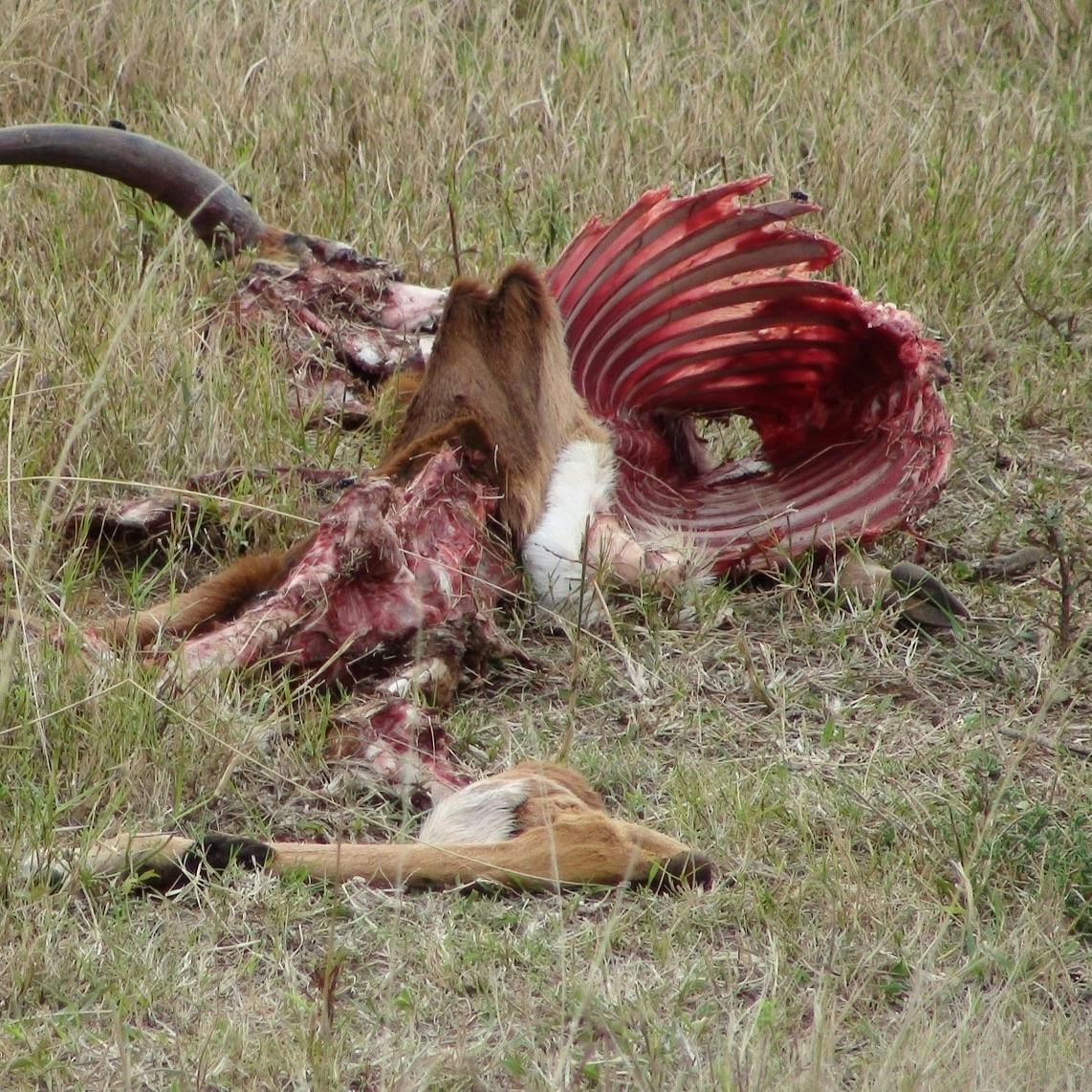
Threats - Habitat Loss
Romania's brown bears have fallen prey to poaching, loss of habitat due to illegal logging and other conflicts with rural communities who view them as a pest. Illegal logging is not only guilty of destroying the bears habitat but sends bears away from the forests because of the noise. In addition to deforestation, the growth of human settlements, agricultural land and transportation infrastructure in the Carpathian Mountains have all contributed to the changing behaviours and movements of Romania’s brown bear population.
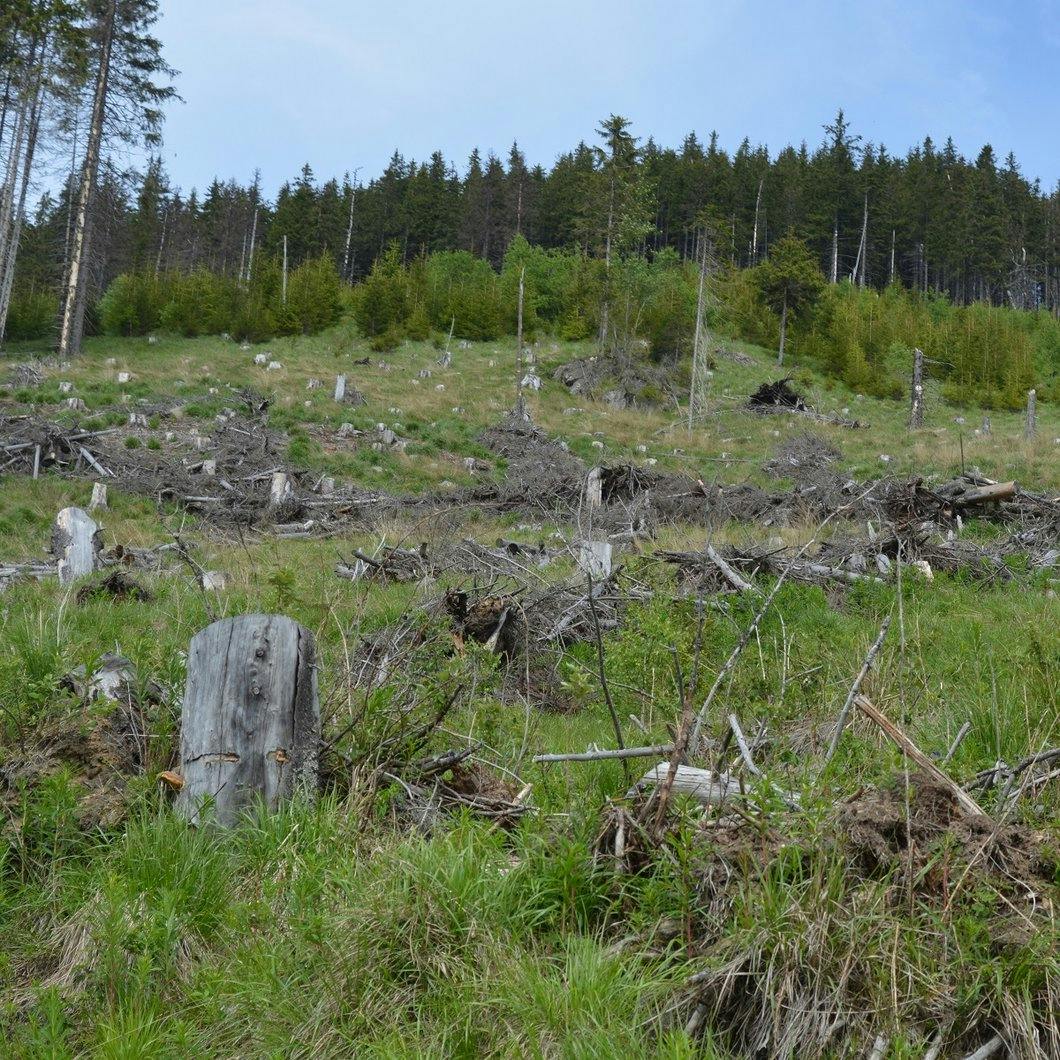
Threats - Human and Bear Conflict
In search of food bears often end up in areas closer to villages or other populated areas where a whole array of attractants exists – orchards, livestock, garbage, and agricultural products. Though bears are a protected species by international and Romanian laws, bears can be hunted, by way of a warrant. If a bear has been seen to cause serious damage or pose as a threat to human populations, a warrant may be issued. While this may seem like a reasonable situation, a bear straying from the mountains is quickly labelled as dangerous by the trophy hunting sector usually, as big money can come out of killing it. It is reported that around 1,400 bears have been killed by trophy hunters since hunting was banned in Romania in 2016.
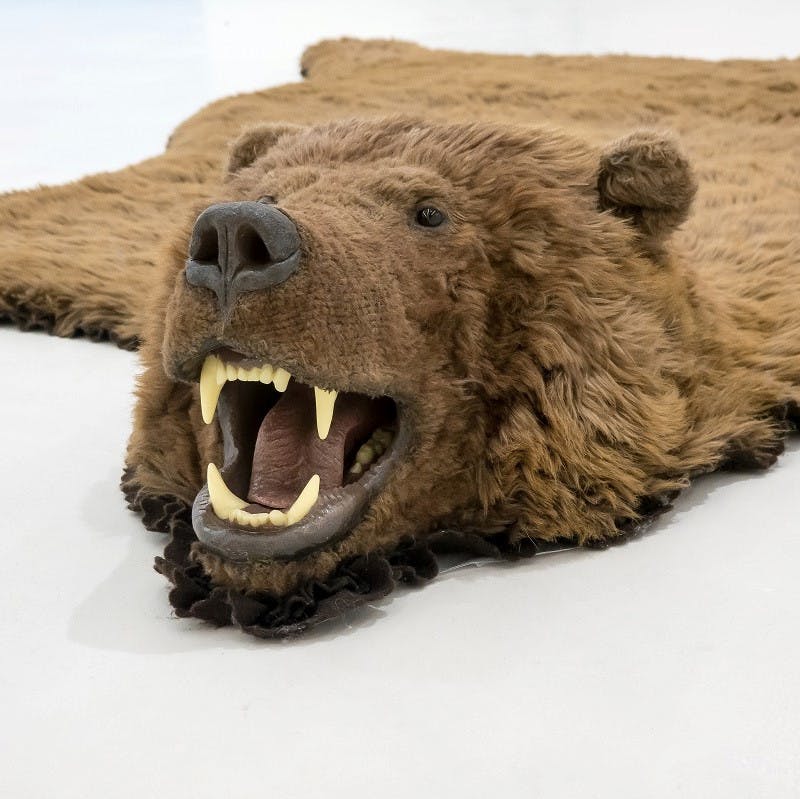
Threats - Negative Press and Political Exacerbation
The 3 fatal attacks that occurred between October and November 2019 hit the headlines hard and have since whipped up a frenzy of negative media attention for brown bears in the region. Instead of providing objective accounts of attacks or actively engaging in preventative actions such as educating the public on safety measures, media reports stoke the fire of fear for local people. This, along with inaction from the government, prompted some villagers to take matters into their own hands by preparing homemade poisons. A study released in the journal Nature on large carnivore attacks discovered brown bears receive the most media coverage worldwide, even if they’re not the most common attacks. Most of these incidents came from encounters with female bears and her cubs. It is, therefore, clear to see how the mainstream media has portrayed the situation unfavourably for bears, one which is compounded by some local politicians who have declared war on ‘problem bears’. Some of Romania’s county leaders, who are spearheading the movement to reinstate the culling of bears, say populations are growing exponentially, a claim disputed widely by Romanian scientists.
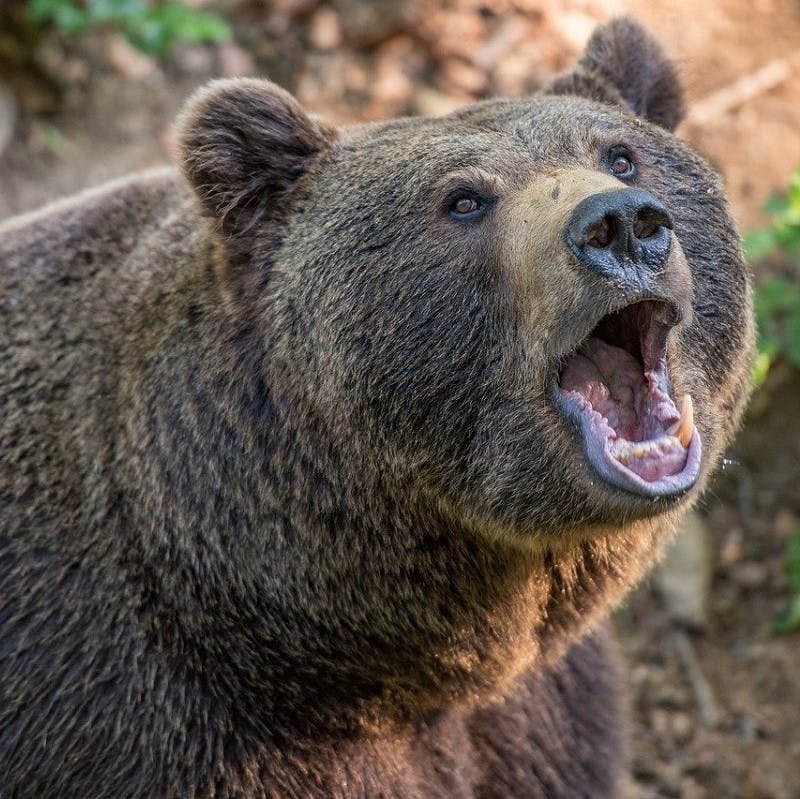
The brown bear is a symbol of what is right with the world
Charles Jonkel, American bear biologist
The Potential Solutions
1. Reforestation
By protecting and regenerating the Romanian brown bear’s natural habitat – forests, we can minimise the need for bears to forage closer to populated areas as their natural food sources become abundant. Reforestation efforts help create new habitats and corridors for other important species too, who are vital for a balanced food chain.
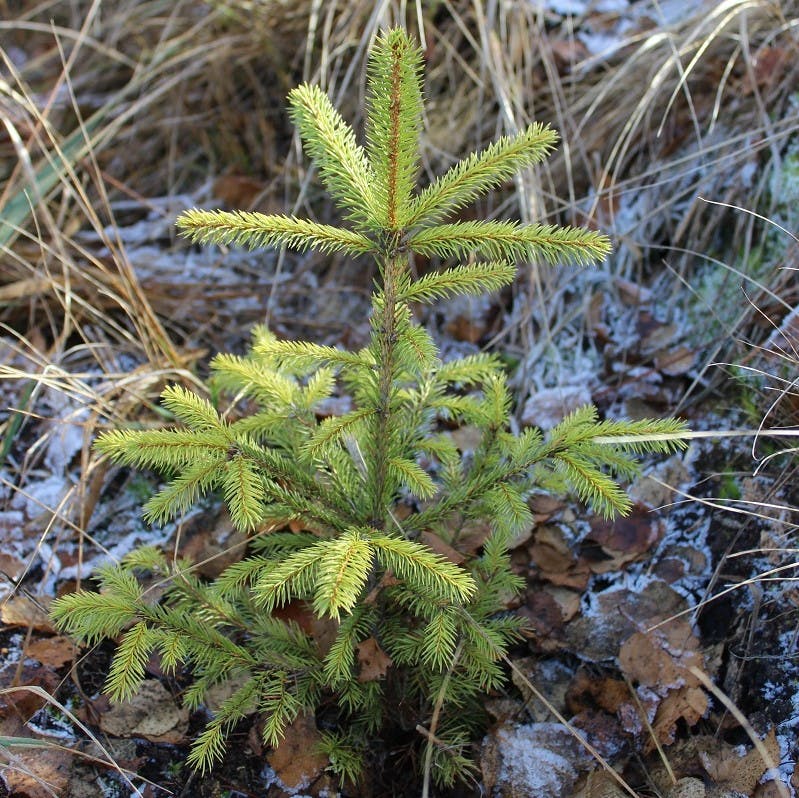
2. Education and Effective Management Strategies
As previously mentioned, informing the public on how to prevent and, if needed, act during confrontations with brown bears is paramount to improving coexistence. This includes better management of attractants for bears: making waste inaccessible; protecting livestock using dogs; and placing agricultural products within electric fences, to name a few potential solutions. Several NGOs are urgently working to provide support to local people as the government frustrates those concerned. One effective initiative set up by Carpathian European Wilderness Reserve replaces livestock that farmers lose to bears which addresses the painfully slow bureaucratic state process.
Scientific research should also be at the forefront of policy making and management strategies. One such example where research findings have contradicted existing methods is the case of relocating bears by means of luring them to food sources then trapping and relocating. Empirical evidence strongly recommends stopping the feeding of bears as once they are ‘food-conditioned’, they are more likely to return.
Further research that brings to light people’s perceptions of coexistence found that factors such as perceived risk of conflict and perceived bear population growth had the greatest influence. The same study also concludes long-term coexistence will be better achieved in people with positive attitudes and values towards nature. Thus, this stresses the power the media possesses and the importance of education in creating successful coexistence and conservation outcomes.

3. Nature-Based Tourism
With wildlife tourism slowly developing into an important source of income for communities living in the Southern Carpathians, it has significant potential for enhancing public acceptance of the species. For example, a bear watching hide installed by the Romanian State Forestry can receive more than 1,000 visitors, generating between € 20,000 and € 30,000 of income annually, that is double what the hide could earn from hunting. Travel companies such as Responsible Travel arrange bear watching holidays in Romania where you get the chance to spot this charismatic creature up close and safely with an expert guide or volunteering at the Libearty Bear Sanctuary.
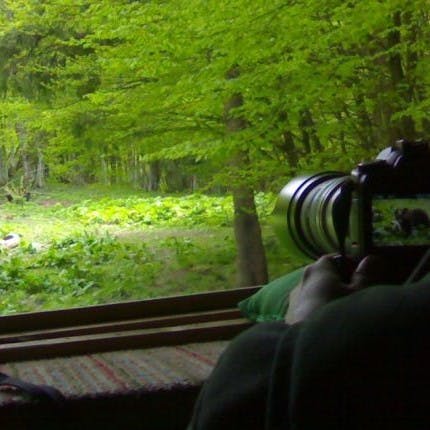
4. Rewilding
Rewilding focuses on re-establishing lost elements of the wilderness and in doing so, brings back opportunities for wildlife to exist sustainably. Some of the missing functionality of nature that is returned by rewilding include predation, grazing, regeneration and decomposition. Not only would Brown bears benefit from rewilding through improved habitat and food stability but they would also serve the whole ecosystem in their role as a keystone species.
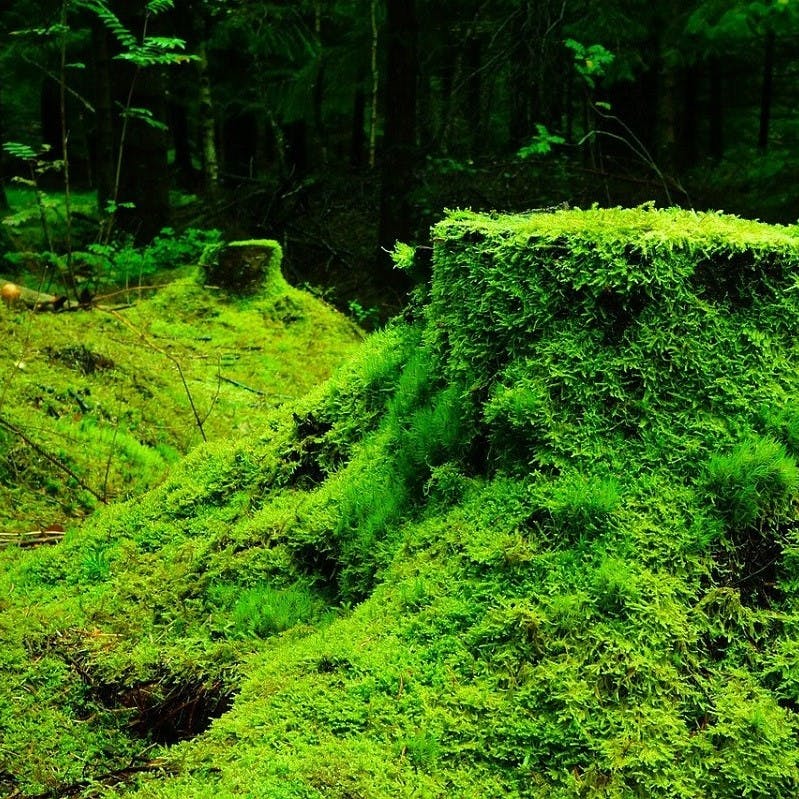
How to Contribute to Reforestation and Rewilding of the Carpathian Mountains
To help protect Romania’s brown bear population as well as many other vital species that live in the Carpathian Mountains, here at Mossy Earth, we've set up a reforestation and two rewilding projects.
1. Restoring the Southern Carpathians
These projects aim to restore swathes of lifeless land previously cleared by illegal logging and support rangers who protect the remaining old growth forests. Through our members at Mossy Earth and our partners on the ground, Fundatia Conservation Carpathia (FCC), we have planted over 295,000 native trees and helped rangers prevent illegal logging and poaching. FCC are also working hard to educate those that have to live alongside bears, as well as facilitating eco-tourism in these rural communities.
Mossy Earth Co-Founders Matt and Duarte were both 'fortunate' enough to come face to face with brown bears in Romania’s Carpathian Mountains. Matt was shepherded down a snowy mountain trail by a female with young, while Duarte spent a rather restless night as a brown bear hounded his tent. Despite shaking in their boots, they were both left spell-bound by their separate experiences making it all the more meaningful to protect this incredible creature.
If you want to be a part of our efforts and many more other impactful reforestation and rewilding projects, our Membership gives you the chance to contribute directly and join our community in restoring nature.
To learn more about other rewilding topics in Romania see the articles The Return of the European Bison and Tracking Eurasian Lynx.
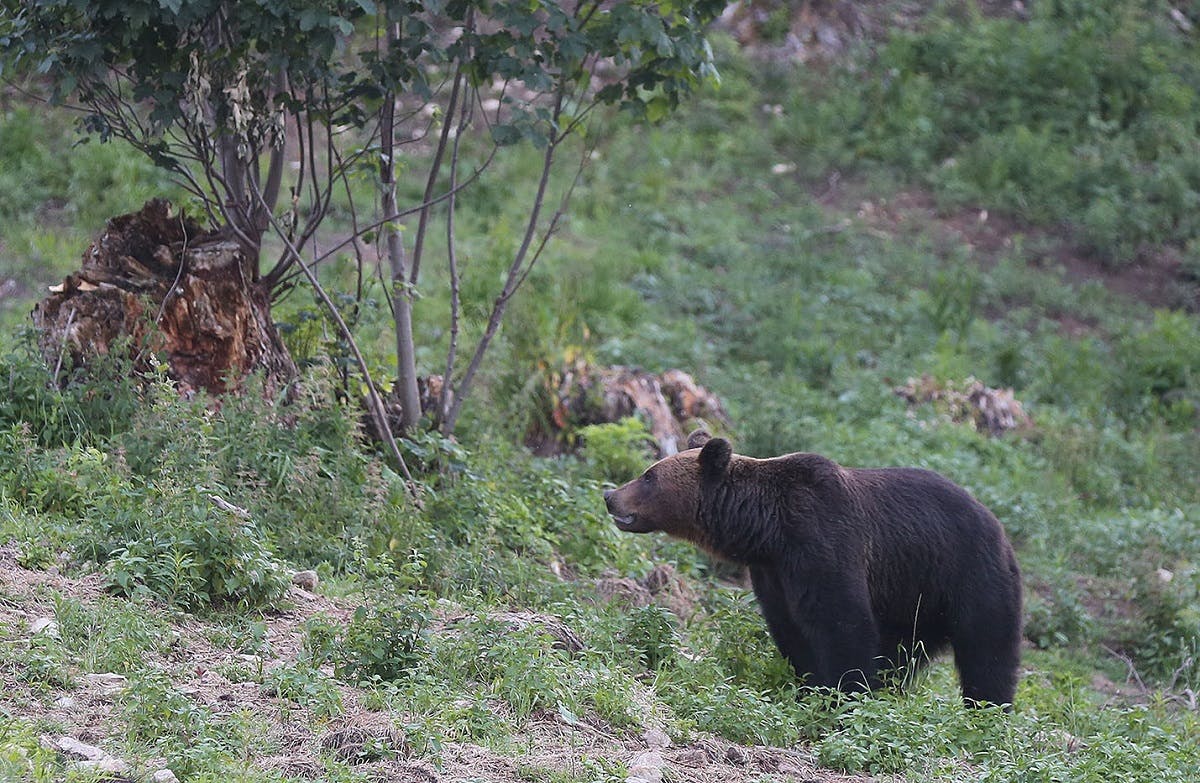
Glossary of terms
Hibernation: Hibernation is a type of dormancy found in some animal species which can see them go inactive. There are many different reasons for hibernation such as short food supply, environmental changes or a need to conserve energy. Some animals heart rate can be reduced up to 95% as well as a much slower metabolic rate, slower breathing as well as a lower body temperature. Other types of dormancy include diapause, aestivation and brumation.
Keystone Species: Coming in many forms, they are organisms whose relationship with their environment can shape the entire ecosystem. If they were removed, it could lead to an ecosystem becoming severely altered or collapsing. Examples of keystone species are birds of prey, wolves, beavers and bees.
Reforestation: This is the planting of trees in an area, where trees once were although they have either been removed or reduced. It usually focuses on the planting of local and native trees that are most compatible with the local soils and species. Reforestation projects can bring many benefits including restoring biodiversity, soil quality as well as carbon sequestration.
Wildlife Tourism: An increasingly growing and popular area, wildlife tourism, or nature-based tourism, is giving people a chance to see wildlife, in their natural habitat. This could be going on guided walks through nature reserves or safaris. It is also a powerful tool for conservation efforts.
Sources & further reading

- “Rewilding Romania” - Mossy Earth
- “Monitoring carnivores in Romania's Carpathian Mountains” - Mossy Earth
